France loves elephants.
What? French Elephants? Even though and maybe because they are not native to France it seems there has been a fascination with elephants throughout French history. When you begin to look around you find there are quite a few more or less famous French elephants. Some are of course imaginary, others constructed of wood and still others are live ones in zoos or sanctuaries. Let’s have a tour of France’s beloved elephants through the ages.
Early history
Cave painting attest to mammoths, but Hannibal’s elephants were likely the first true elephants in Gaul, but they didn’t fare so well. The next importation wasn’t for quite a few years.
The French Kings’ Elephants over 900 years 768 to 1668
Many French kings kept elephants at court and by the Renaissance they were quite in vogue.
Charlemagne’s was named Abul-Abbas and was an Asian elephant brought from Baghdad by a diplomat in about 802. The gift was from the Abbasid caliph and symbolizes the beginning of Abbasid–Carolingian relations. This elephant technically lived in what is present day Germany before France was a kingdom, but Charlemagne is a Frank and his empire spread quite a ways east.
Louis IX (1226–1270) gave one to Henry III of England as he was travelling through France in late 1254. The elephant arrived in England in early 1255 and a special house for it was constructed at the Lion’s Tower of the Tower of London. It was the first elephant to be seen in the country since the Roman invasion of 43 AD.
King Louis XI (1461–1483) was known as the Spider King due to his diplomatic network, but he was a great admirer of animals and in his menagerie
“He had warrens and cages and pens in all his retreats… an elephant, dromedaries, leopards, ostriches, and other fierce and exotic beasts… two little otters of Spain,… peacocks, magpies and Turkey birds.” –From Kendall’s Louis XI, The Universal Spider
At some point during his reign, Henri IV (1589–1610) had an Indian elephant. He found it too expensive to feed so he re-gifted it to Elizabeth I of England.
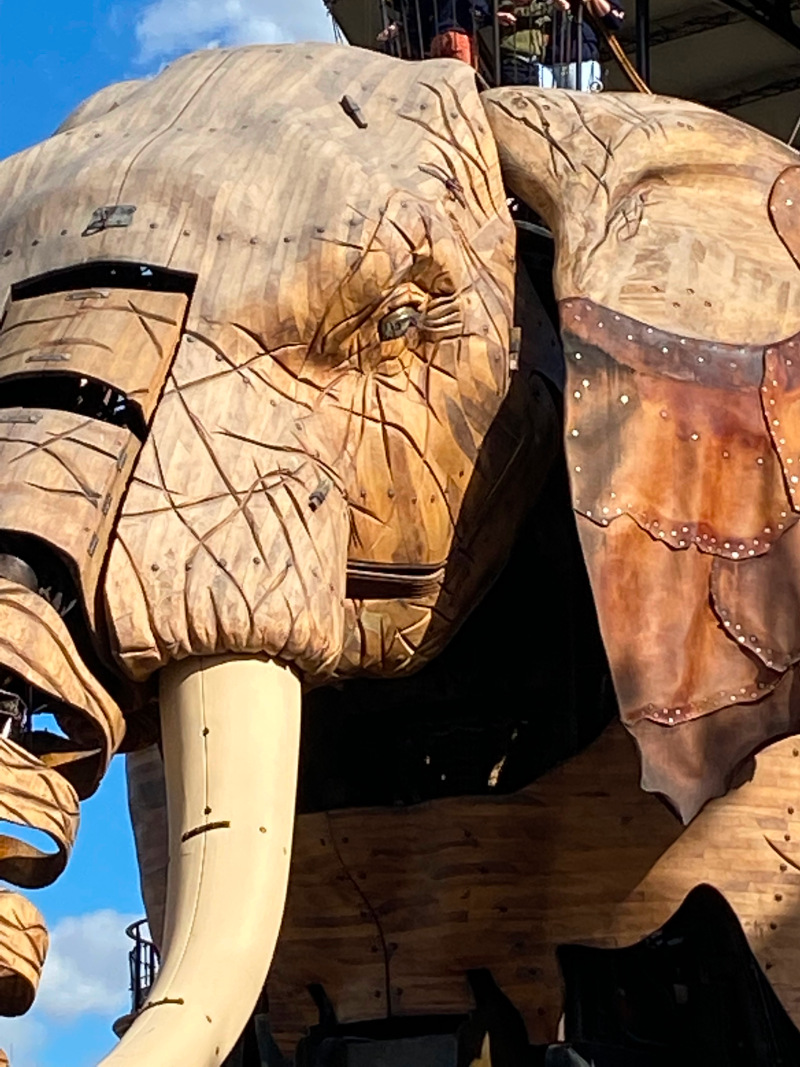
Les Machines de l’Ile
In the 17th century, around 1668, several elephants lived at the royal menagerie in Versailles. The first elephant, a gift to Louis XIV from the king of Portugal, Pedro II, lived at Versailles for 13 years. It was nourished each day with 80 pounds of bread, 12 liters of wine, a large portion of vegetable soup plus as much grass as it wanted. It was one of the most popular animals at Versailles and attracted great numbers of curious visitors, scientists and artists. The public was welcome at the palace. When it died in 1681, the dissection was a major scientific event. It was only then discovered that the creature was not a male, as the keepers had long supposed, but a female elephant. The skeleton remains today in the Muséum national d’histoire naturelle, in the comparative anatomy gallery. If you haven’t visited this gallery yet it is well worth the trip to the Jardin de Plantes.
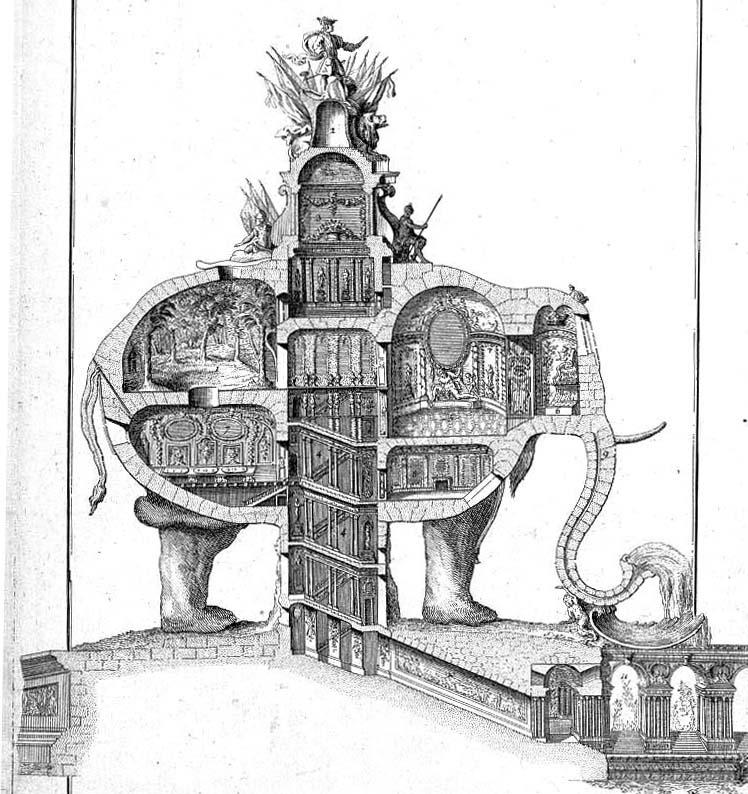
Architecture Singulière: l’Eléphant Triomphal, Grand Kiosque, à la Gloire du Roi.
The Elephant of Paris 1758
The artists and craftsmen of 16th and 17th centuries frequently used the elephant in art and decoration. The apex of the elephant motif was when architect Charles François Ribart hatched a plan to build (where the Arch of Triumph now stands) a reception hall in tribute to Louis XV. For this project he chose a building in the shape of an elephant. The proposal was entitled quite loftily Architecture Singulière: l’Eléphant Triomphal, Grand Kiosque, à la Gloire du Roi. The building-pachyderm was to have a banquet hall, kitchen, bath, amphitheatre, fountains and throne for the king. Alas it was never actually built. Read more
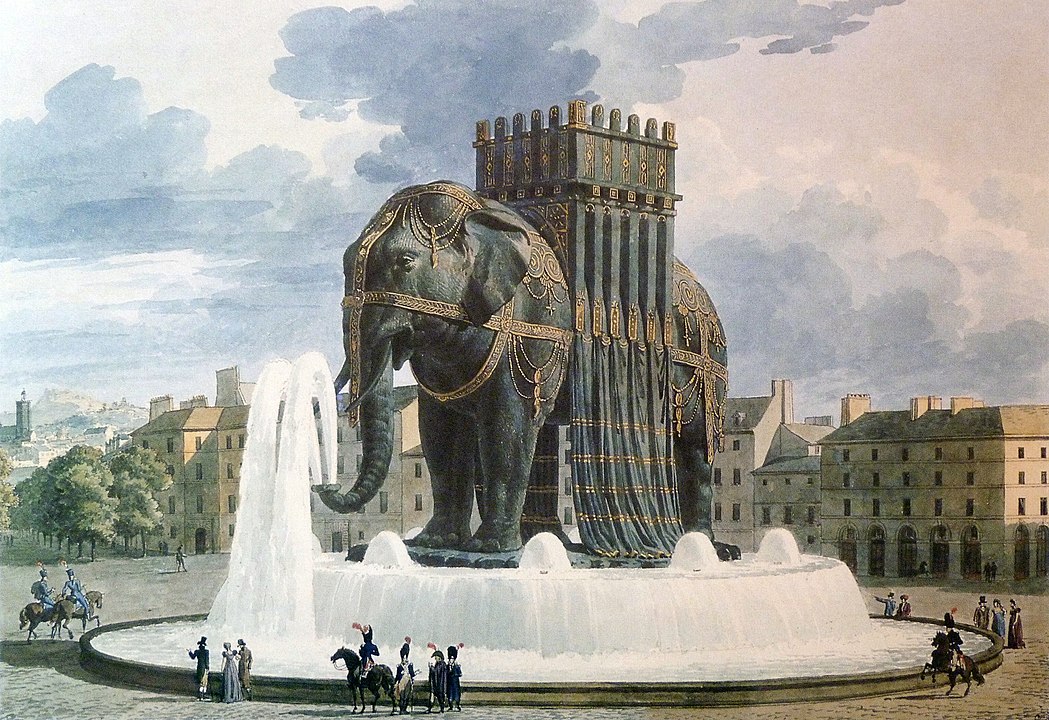
Aquarelle de Jean-Antoine Alavoine (1776-1834), Public domain, via Wikimedia Commons
The Elephant of the Bastille 1808
Then the monarchy fell. After the Bastille was razed there was a great debate as to what should replace it. In 1808 Napoleon came up with the idea of a colossal elephant in bronze representing France’s imperial stature. A stairway would allow visitors to ascend one of the legs to a platform on its back. A full-scale plaster model on a wood frame was built. Completed in 1814, the model was protected by a guard who lived in one of the elephant’s legs! Since the model was full size, 24 meters tall, and bronze was expensive, it ended up never being cast. The plaster Elephant of the Bastille existed between 1813 and 1835. The circular base on which the elephant stood still remains and now supports the July Column. The elephant was immortalized by Victor Hugo in his novel Les Misérables (1862). Hugo uses it as a shelter for the street urchin Gavroche.
Elephants in Chambéry 1838
Another fantastic sculpture with four half elephants emerging from a block, is the 17.6 meter high fountain in Chambéry. It looks rather like a model for an old Indian postage stamp, et pour cause, it was sculpted in 1838 in honor of Général de Boigne (1751–1830), who made his fortune in the East Indies. The city of Chambéry honored the General with this monument in thanks for his financial contributions to the town. The Chambériens and Chambériennes call it les quatre sans cul (the rump-less four) which might be a pun on the cult film Les quatre cents coups.
Elephants under siege 1870
Castor and Pollux were two elephants kept at the Jardin des Plantes zoo in Paris. They, and the rest of the zoo animals, were killed and eaten by desperate Parisians during the 1870 Prussian Siege of Paris. Zarafa, the magnificent giraffe and first-ever giraffe in France, was also part of the the Jardin des Plantes menagerie, luckily a little earlier in time, thus she died a natural death. https://fusac.fr/two-obelisks-and-a-giraffe/
Some of the French elephants are linked to colonialism and the resulting exotic fashions of the 19th and early 20th centuries which were presented to the public in universal expositions. Two well-known sculptures and a bas relief come to mind.
- Éléphant du Sénégal chargeant 1875. A small, but energetic, bronze sculpture by Antoine Louis Barye can be seen in the Louvre. The movement of the great beast is captured by the pose balanced only on one leg.
- The Elephant in the trap 1878. The life size cast iron sculpture writhes on the square at the entrance of the Musée d’Orsay. The sculpture by Emmanuel Frémiet who succeded Barye, was commissioned for the universal exposition of 1878. Frémiet is also the sculptor of the golden Joan of Arc on Place des Pyramides Paris’ 1st arrondissement.
- Elephants in relief on the façade of the Palais de la Porte Dorée. Between 1929 and 1931, for the Palais des colonies, Alfred Janniot created this huge allegorical bas-relief of 1130 square meters in just two years. Quite possibly the largest bas-relief in the world, the stone tapestry covers the entire facade of the Palais de la Porte Dorée which houses the very interesting Musée de l’Immigration as well as an aquarium and exhibition space. The bas-relief is a global bestiary which represents with quasi-scientific precision more than 215 animals of all species: insects, fish, molluscs, birds, reptiles, wild and domestic mammals including elephants… Similarly, costumes, hairstyles, technical gestures of the craftsmen and cultivators are depicted with ethnographic precision. Read more about this work of art or better yet stop by and see it yourself.
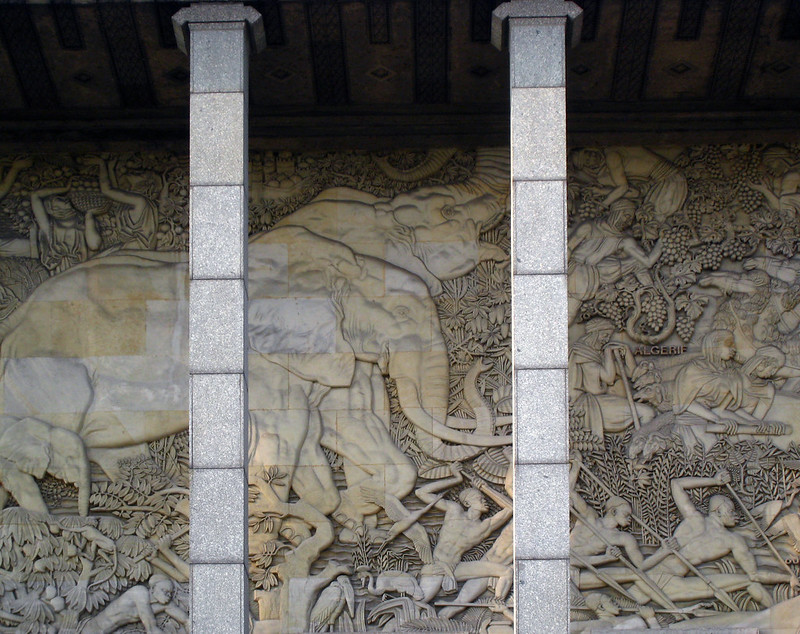
photo: https://www.flickr.com/photos/groume/4664760642
The Elephant of the Moulin Rouge 1889
Moulin Rouge founders Charles Zidler and Joseph Oller purchased a giant stucco elephant they had seen at the Paris Universal Exhibition of 1889. They added it to the garden of the Moulin Rouge where it served as a opium den. Gentlemen entered through a spiral staircase inside the leg of the beast (sound familiar?). Not only did they smoke in the belly of the beast but they were entertained by belly dancers. Logical, no?
20th Century French elephants
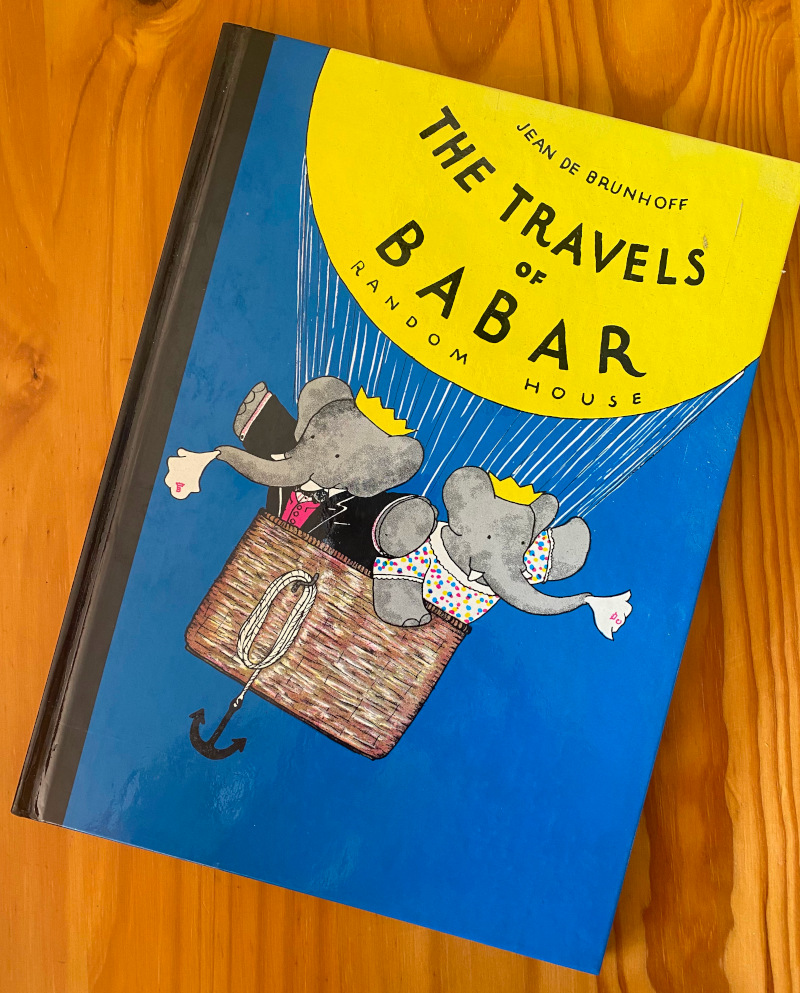
Babar The King of French Elephants 1931
When French author and illustrator Jean de Brunhoff died of tuberculosis at the age of 37, it looked as though one of the best loved characters in children’s literature—Babar the elephant—would die with him. But following the end of World War II de Brunhoff’s son, Laurent, took up his father’s pen. Since then, he has written more than 45 Babar books. De Brunhoff describes how the character of Babar was born in a National Geographic interview in 2014:
We were at my grandfather’s house on the east side of Paris. We used to go there for the summer and to meet our cousins. My brother is one year younger than me. We were like twins. And my mother started to tell us a story to distract us. We loved it, and the next day we ran to our father’s study, which was in the corner of the garden, to tell him about it. He was very amused and started to draw. My mother called him Bébé elephant. It was my father who changed the name to Babar.
In 2011, Frédéric Mitterrand, the cultural minister, presented Laurent a medal of arts and letters. In his speech, he said that Babar was the most famous Frenchman in the world. Laurent married an American woman and in 1985 moved to the United States, but Babar is still French and drinks only red wine. Mrs de Brunhoff, Phyllis Rose, thinks Babar is, indeed, an affectionate, closeup caricature of an idealized French society.
21st century French elephants
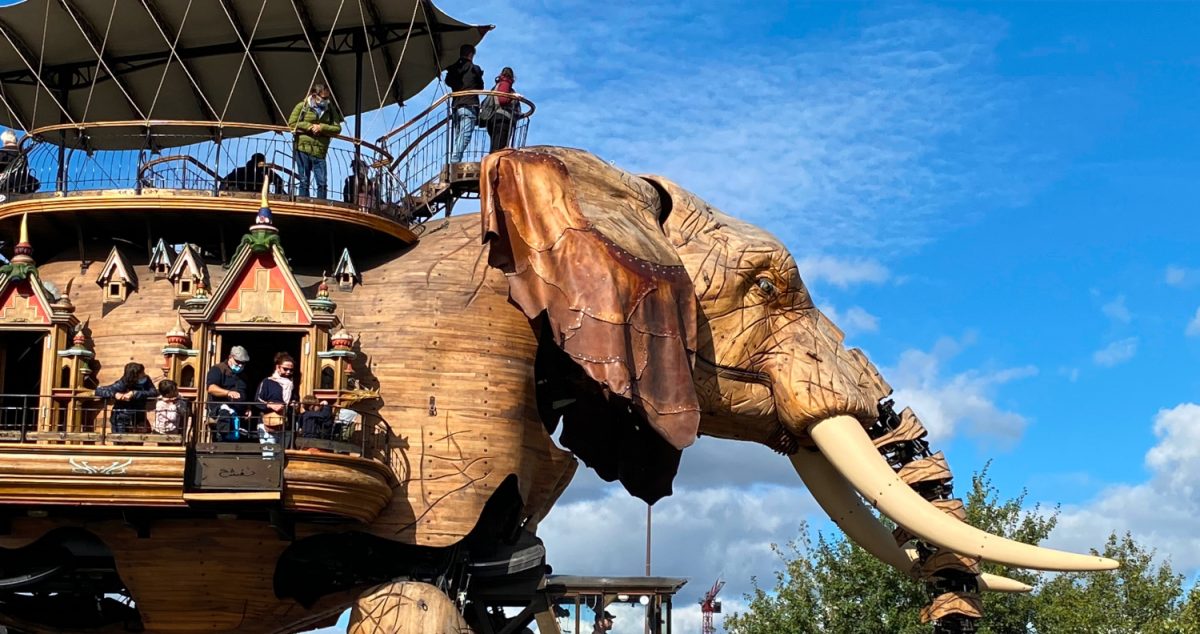
Les Machines de l’Ile
The Elephant of Nantes 2003
More than a century later FUSAC’s personal favorite French elephant (and inspiration for this article) was created in Nantes. Les machines de l’île is an amusement park of a unique kind full of mechanical creatures. The best-known, most fantastic, not to be missed creature, is the giant, mechanical elephant. It walks, it trumpets and even sprays water from its swinging trunk. The elephant is nearly 5 stories high and 21 meters long. The mechanics move the 48,4 metric tons of steel, tulip poplar and basswood at 2 kilometers per hour. The knees and ankles flex and move rather realistically as if it is walking. The ears flap; the long lashed eye blink. You can take a 30 minute ride on it, it holds 50 people at a time, but we thought it was more fun and interesting to watch it go by rather than ride on top. And watching the fascinated excited crowd added to our pleasure. This most ingenious creature, half carnival-ride, half sculpture, has companion geckos, birds and plants all loosely inspired from Jules Verne, who was born in Nantes. A huge thanks to François Delaroziere and Pierre Orefice who created this marvelous creature as part of the best urban renewal project we have come across in France.
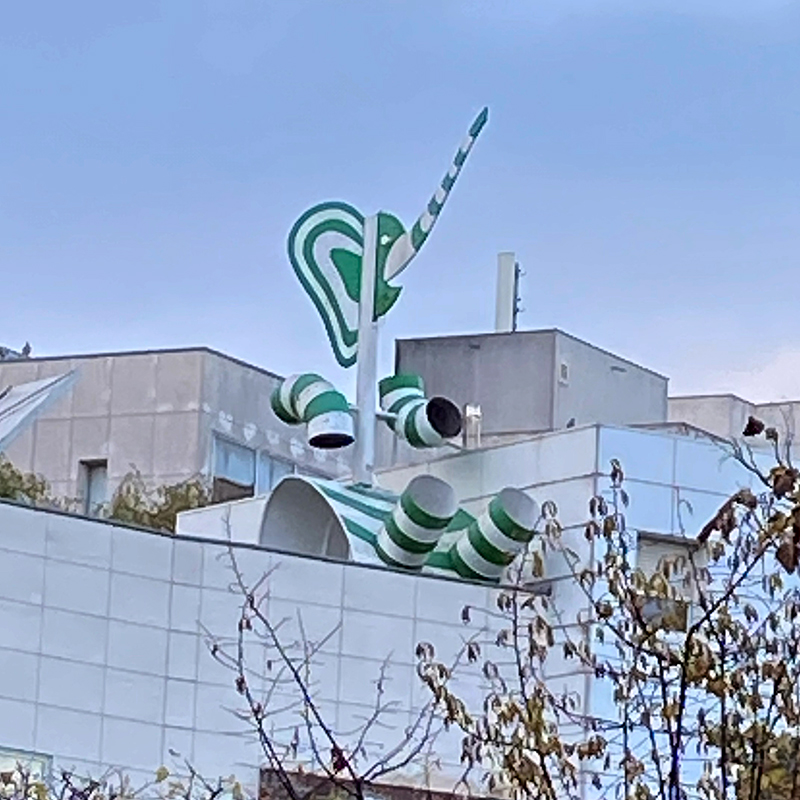
The Elephant in Boulogne-Billancourt
FUSAC’s home town, Boulogne-Billancourt, has it’s own elephant sitting atop a nursery school on rue Nationale. This happy creature is green and white with legs dangling over the edge of the roof he surveys the park below and welcomes the kids to school. Boulogne also has a giraffe several stories tall.
Elephant Sanctuary in France 2021
In response to a ban on employing wild animals in circuses two former Flemish zookeepers, Sofie Goetghebeur and Tony Verhulst, created the sanctuary Elephant Haven European Elephant Sanctuary. In 2021, the 1300 inhabitants of Bussière-Galant, in the Limousin department, got an a new and unusual neighbor – an elephant called Gandhi. The 52-year-old female Asian elephant is the first resident of a unique sanctuary for circus and zoo elephants. There are more than 100 elephants in circuses in Europe and relocating them back to their country of origin is not always possible, while creating a safe haven for them in Europe is possible say the folks at the haven. The Haven’s secondary mission is to develop informative programs about elephants and their behavior in captivity and in the wild.
Bonus Tidbits:
Other French Elephants: Certain influential and veteran members of the French Socialist Party are nicknamed Les Eléphants.
The word elephant comes via Latin from the Greek for ivory.
Remember the old saying “avoir une mémoire d’éléphant” (which also works, for once, in English)? That’s the origin of a French trivia magazine titled L’Elephant.


